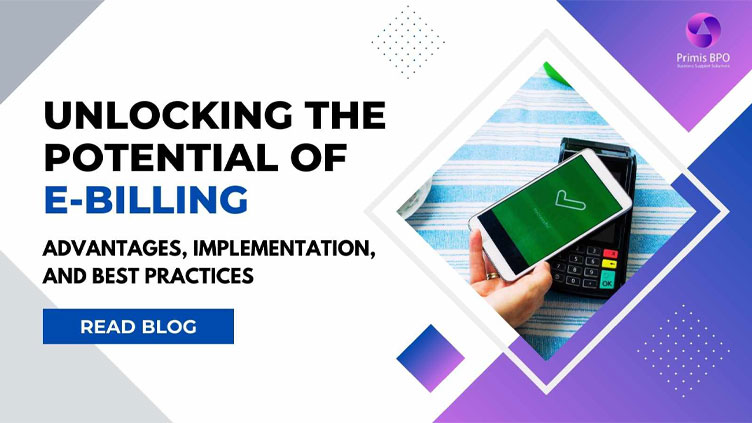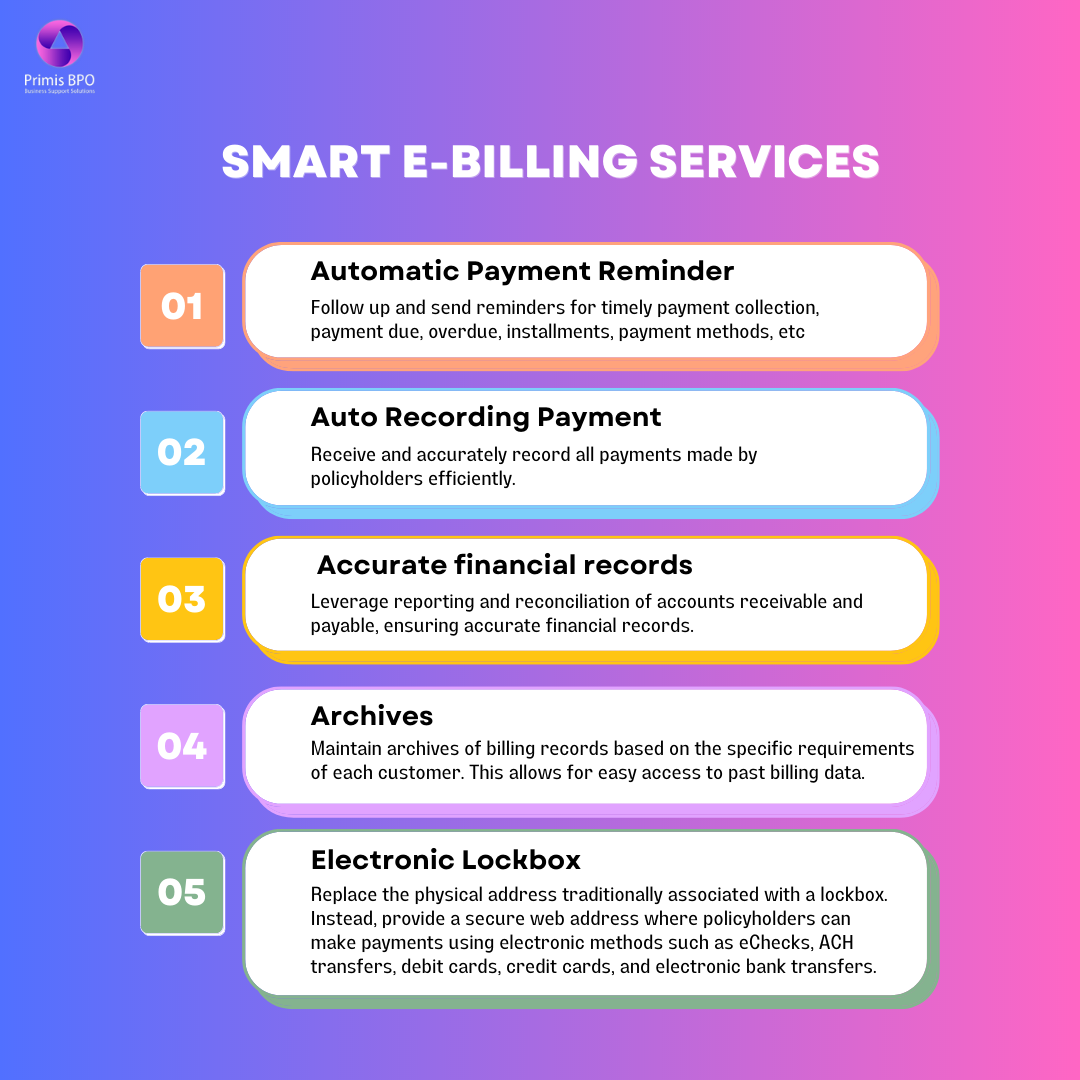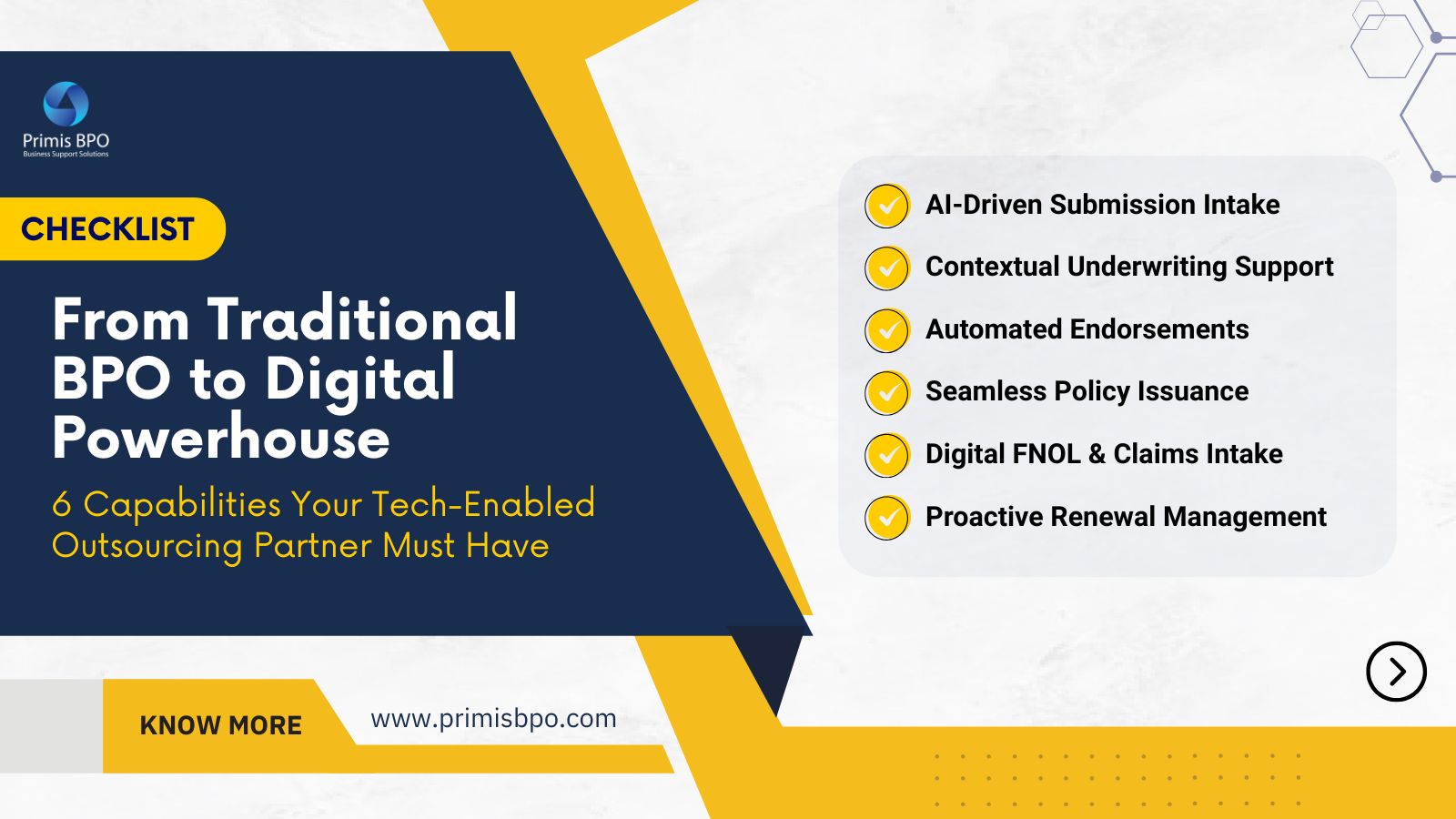
E-Billing - From Basic Transaction to Strategic Differentiator
In today's digital age, insurance companies continually seek ways to streamline operations, enhance customer experiences, and improve efficiency. One such avenue that holds immense potential is electronic billing or e-billing.
However, customers also demand greater flexibility in managing their bills and desire transparency in their payment records. They anticipate the ability to effortlessly switch between different billing methods, such as transitioning from agency pay to direct pay, during the policy term.
By transitioning from traditional paper-based billing to electronic methods, property and casualty (P&C) insurance companies can unlock numerous advantages. In this blog, we will explore the advantages of e- billing, discuss its implementation process, and delve into best practices for successful adoption in the P&C insurance industry.
Why Outsource E-Billing Services?
Efficient cash flow is crucial for an insurance company to maintain a successful business model. Inaccurate billing and ineffective accounts receivable methods result in payment delays and significant debt accumulation. Outsourcing insurance billing not only ensures an effective accounts receivable system but also leads to significant cost savings.
By opting for outsourced electronic billing services, you can elevate your business model and enhance cash flow while avoiding bad debts. Insurance brokers can seamlessly handle financial tasks while we manage insurance accounting and billing services, guaranteeing the submission of error-free and cohesive invoices to insurance carriers. Additionally, insurance companies can receive payment reminders, process invoice payments, and maintain a catalog of accounts receivable invoices for accurate reporting purposes.
Implementation of E-Billing in P&C Insurance
By outsourcing, insurance companies can gain control over their insurance premium accounting, payment collection, and overall expense ratio. Here’s how you can implement e-billing:
Enhanced Invoice Delivery
Ensure accurate and timely delivery of invoices by maintaining a comprehensive record of billing dates for clients. Generate premium invoices in various formats, such as Excel and PDF, and deliver them via email to policyholders.
Timely Payment Follow-Ups
Ensure regular and prompt follow-up on payment collections by sending reminders, allowing our professionals to receive and record payments.
Categorized Invoice Generation
Generate invoices categorized as monthly, quarterly, or annually, providing a comprehensive overview of the billing period, including tax and commission details associated with each insurance policy.
Accounts Receivable Transaction Statements
Document accounts receivable transactions within the accounting system and provide periodic statements to policyholders, detailing their outstanding balances.
Streamlined Cash Application Process
Simplify the cash application process by preparing accounts receivable reports, maintaining subsidiary receivables ledgers, and accurately allocating received cash to individual customer accounts.
Comprehensive Revenue Stream Records
Utilize cutting-edge tools to maintain a complete record of all revenue streams for insurance agencies. This simplifies the tracking of accounts receivable, allowing management to query individual invoices and payments when necessary.
By leveraging these insurance accounting solutions through outsourcing, insurance companies can optimize their financial management processes, enhance customer satisfaction, and achieve better financial outcomes.
E-Billing Service Features

Best Practices for Successful E-Billing Adoption
Increased Cost Savings
Eliminates expenses associated with paper, printing, and postage involved in traditional billing methods, insurance companies can significantly reduce operational costs and improve efficiency.
Improved Customer Experience
Offers policyholders a convenient and seamless experience by allowing them to receive their bills electronically, review them at their convenience, and make online payments.
Faster Payments and Reduced Delinquencies
Accelerates the payment process by providing instant access to bills and facilitating online payment options with automated reminders and notifications to prompt customers to pay their bills on time, further reducing delinquencies. This results in faster receipt of payments, reducing outstanding balances and late payments.
Enhanced Data Accuracy and Analytics
Captures accurate and real-time data, eliminating manual data entry errors to improve the accuracy of billing information and streamline the reconciliation process. Insurance companies can leverage this data to gain insights into customer behavior, and payment patterns, and identify areas for process improvement.
Ensure Data Security
Implement robust data security measures, such as encryption techniques, multi-factor authentication, and regular security audits, to ensure the protection of customer information and maintain data integrity.
Continuously Monitor and Improve:
Monitor e-billing performance metrics, such as adoption rates, customer satisfaction, and payment timeliness, to identify areas for improvement. Utilizing customer feedback helps in understanding pain points and making necessary adjustments to enhance the e-billing process.
Outsource E-Billing Services to Primis BPO
E- billing offers P&C insurance companies a significant opportunity to optimize their billing processes, enhance customer experiences, and improve operational efficiency. However, successful implementation requires careful planning, readiness of infrastructure, and a customer-centric approach. By following industry best practices and leveraging technology solutions tailored specifically for the insurance sector, P&C insurance companies can unlock the full potential of e-billing and gain a competitive edge in the digital landscape.
In recent years, we at Primis have successfully delivered tangible results to numerous global insurance agencies, showcasing our resourcefulness and unwavering commitment. We offer a comprehensive range of insurance back-office support services that can further accelerate your business goals and revenue stream.
Connect with us to discuss how we can customize insurance accounts and billing services to meet your specific needs and budget requirements.
Recent Blogs

Optimizing Auto Insurance Underwriting Through Outsourced AI-Driven Risk Intelligence

[Checklist] From Traditional BPO to Digital Powerhouse: 6 Capabilities Your Tech-Enabled Outsourcing Partner Must Have

Outsourcing AI-Enabled Property Risk Analysis

Outsourcing AI-Powered Risk Assessment for Insurance Optimization

Augmented Underwriting: When Human Expertise Meets Digital Intelligence